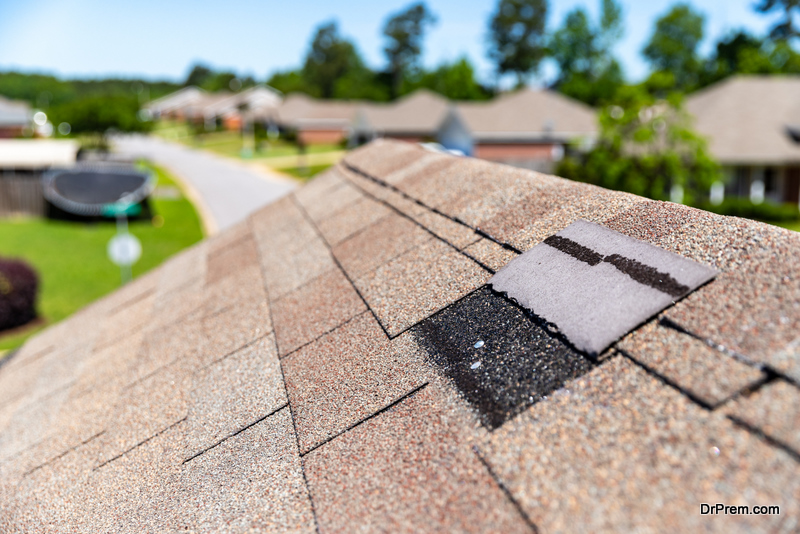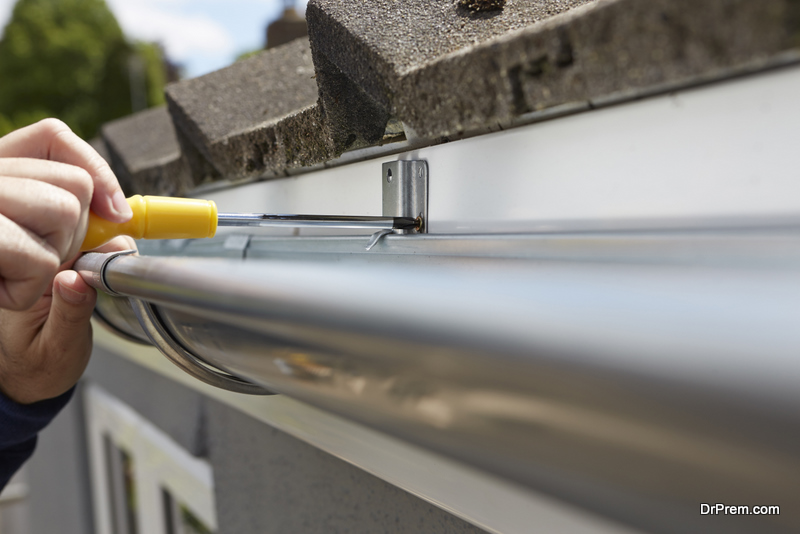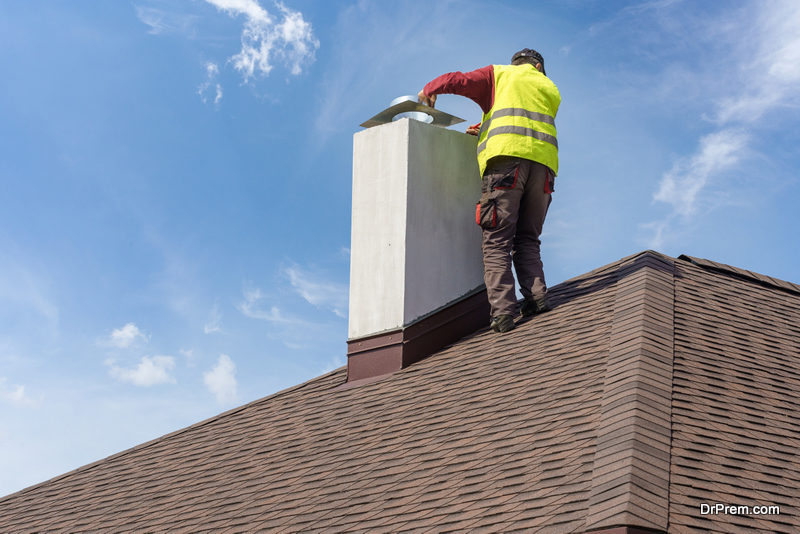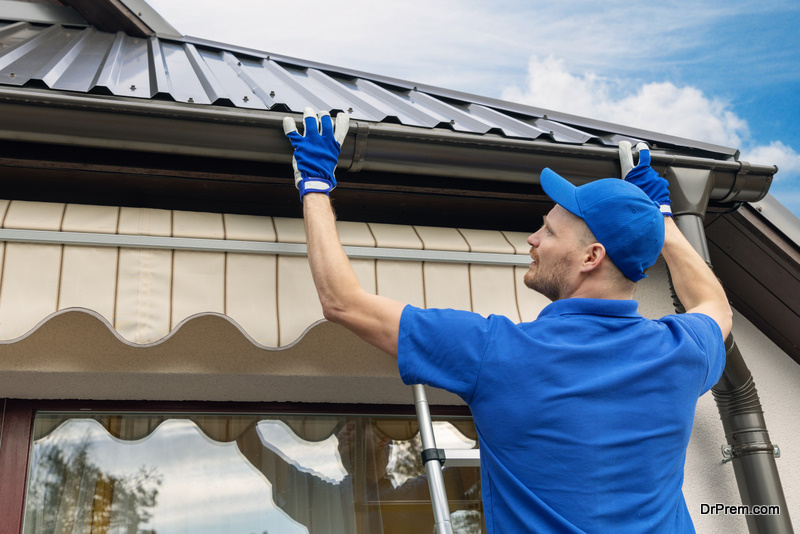The roof is one of the most important structures in and out of your home. When your roof is failing or is suffering from damages, the whole framework is impacted. For instance, water leaks, if left unattended, can leave your ceiling and walls crumbling. For this reason and more, you need to make sure that your roof is in tip-top shape at all times. Performing regular roof inspections can help you spot potential problems and arrest issues that are causing worries.
Making sure that you’re able to perform a basic roof inspection will help you assess whether a contractor is capable of providing high-quality work, in case you’re planning to have this part repaired or replaced.
1. Check The Building For Obvious Signs Of Damage
 Don’t take out your ladder yet unless you’ve checked your home’s entire structure for physical signs of damage. Water stains, peeling or bubbling paint, drips and leaks, as well as mold and mildew formation are all warning signs that your roof may be past its prime.
Don’t take out your ladder yet unless you’ve checked your home’s entire structure for physical signs of damage. Water stains, peeling or bubbling paint, drips and leaks, as well as mold and mildew formation are all warning signs that your roof may be past its prime.
These may be indications of a deeper problem, so consider searching for roofing contractors nearest you. If you’re in Ontario, Canada, for instance, you may simply type ‘roofing Guelph’ to start your search.
2. Your Safety Is Primordial
Before climbing up the roof, make sure you’re physically ready and have the proper equipment in place. Check if you have a sturdy ladder with at least three feet extra height to take you to your home’s topmost area, and make sure there are no electric wires or potential hazards.
Consider getting a roof harness if you’re planning to do inspections often. Use proper footwear and never climb up if your roof is wet and slippery, or if the weather’s too hot.
3. Check Your Roof’s Gutters
 Once you’re on the roof, check the gutters for any obstruction. Remove accumulated water, dried leaves, dead animals, and other causes of blockage. The gutter should be completely clear of any object to encourage smooth water outflow.
Once you’re on the roof, check the gutters for any obstruction. Remove accumulated water, dried leaves, dead animals, and other causes of blockage. The gutter should be completely clear of any object to encourage smooth water outflow.
A roof isn’t designed to have a pool of water anywhere around it, so make sure it stays that way. It doesn’t matter which types of roofing materials you choose; water should flow seamlessly away from your roof.
You can also check underneath the gutter to see if there are cracks or broken parts. Understand how your roof gutter was constructed to give you an idea in case a contractor proposes specific improvements and repairs
When conducting an inspection prior to repairs, a roofing provider should be able to write a detailed report about its condition, as well as the reasons why it has to be replaced.
4. Don’t Miss Your Roof’s Flashing
Flashing is important because it seals the joints between the roof’s angles, protecting the house from leaking and erosion. If it becomes weak or deteriorates, it’ll be easier for water to seep through, causing wood to rot, and shingles or tiles to get damaged.
If you see that there’s something off about the flashing, for instance, small cuts, gaps, or tears, conduct further inspection.
Before any roof repair or replacement, contractors are required to check the flashing, too, for potential issues.
5. Chimney Inspection
 You can only check on your chimney properly while you’re on the roof, so take this opportunity to have a quick look at it. The chimney should have a fully functional saddle to keep water away from it, which is critical when it’s raining or snowing outside. If you’re having problems with your chimney lately, access your roof to see which problems need to be addressed.
You can only check on your chimney properly while you’re on the roof, so take this opportunity to have a quick look at it. The chimney should have a fully functional saddle to keep water away from it, which is critical when it’s raining or snowing outside. If you’re having problems with your chimney lately, access your roof to see which problems need to be addressed.
You should focus on cracks, weathering, base problems, or if this part of your home shows any sign of deformities.
6. Check The Attic
The attic is usually the structure directly below your roof, and it can provide signs of potential roof damage. Conditions inside your attic can tell you more about your roof’s conditions.
Check the frames for any rotten wood or water stains, as well as mold and mildew formations. You’d also want to check the ventilation and insulation inside this part of your home. If there’s poor ventilation or if it’s too hot inside your attic, this could mean that there are signs of wear and tear on your roof that allows heat to leak through.
In the winter, roof damage may come in the form of ice dam formations. Excess heat in the attic warms the roof and not the eaves, causing them to form.
Final Thoughts
Your roof inspection checklist will hinge on the specific roofing problem you’re worried about. While it’s a good idea to prioritize a few parts during roof inspections, it’s also ideal to perform a thorough checkup of the other structures that could impact the conditions and structures of your roof.
In checking you roof, always put your safety above other things. Don’t pressure yourself into doing things that you’re not comfortable with, or anything that could expose you to accident risks or injuries.
Article Submitted By Community Writer




